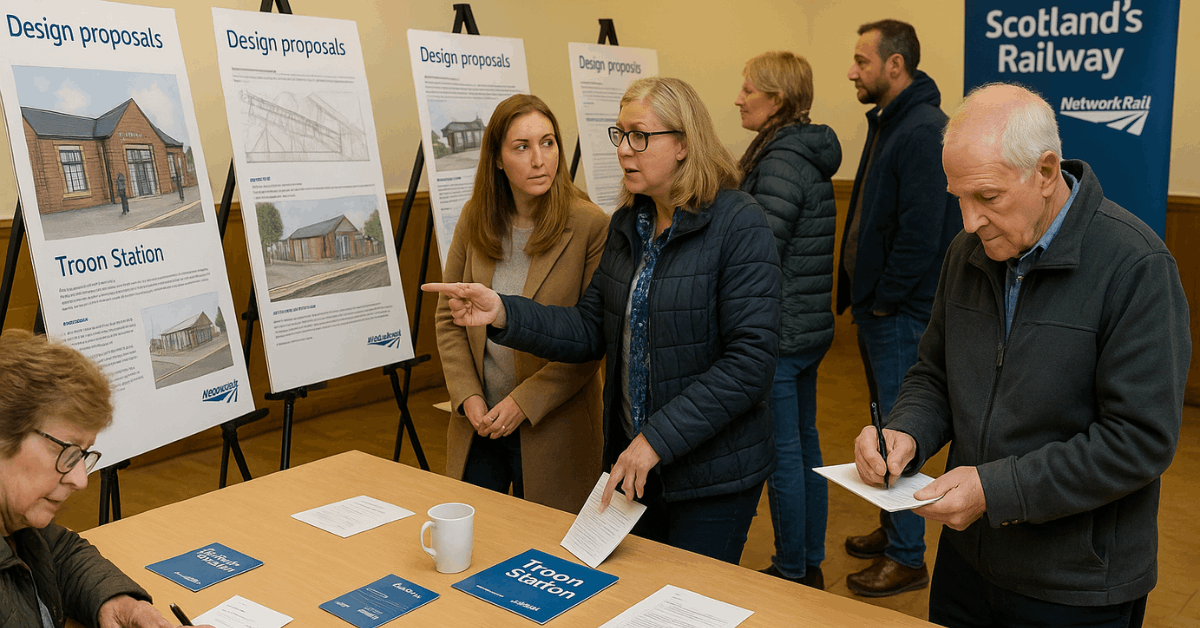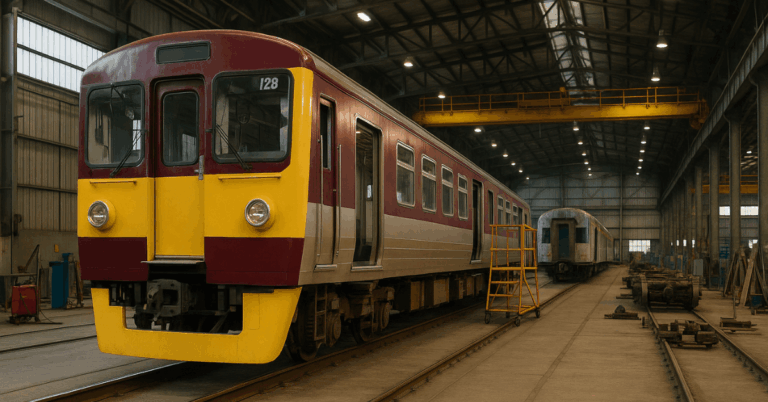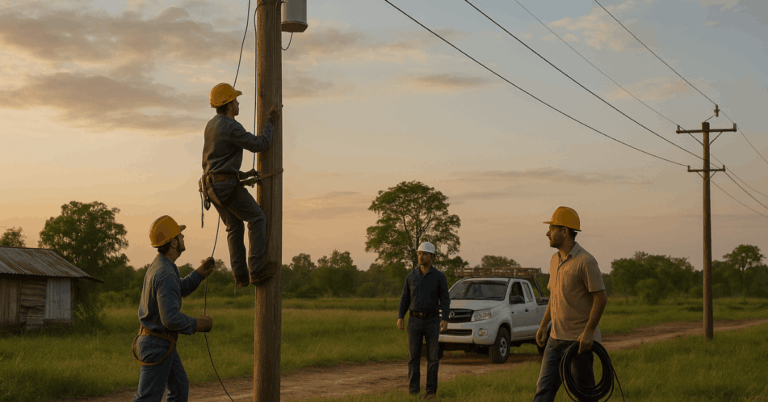Local interest around Troon remains high after Station Redevelopment Plans Unveiled introduced three paths for rebuilding the historic coastal stop.
Concepts followed the Troon Station fire of July 2021, which destroyed the platform one building and canopies, and prompted an extensive options study and public engagement.
Network Rail’s early proposals outlined heritage-sensitive reinstatement, a slightly revised rebuild, and a modern interpretation echoing historic form. Construction has since finished, with the restored station reopening in July 2024 and formally marked that November, completing a £5 million Scotland’s Railway project.

Background and Why This Rebuild Matters
Fire damage in 2021 removed key passenger amenities on platform one and disrupted day-to-day operations.
Early communications described a staged approach: engage the town, select a single preferred option, and advance it through design and approvals.
Timeline planning is aligned with major local events to reduce disruption and restore full facilities before peak visitor periods. July 2024 completion met that target, returning ticketing, shelter, and circulation capacity to regular users and visitors.
Design Options Explained and How Each Balances Heritage
Community sessions showcased three distinct architectural approaches, each committing to a modern internal layout that meets current standards for customers and staff.
Each option sought to respect Troon’s character while solving practical issues like circulation, accessibility, and back-of-house space.
Choosing between a like-for-like rebuild and a contemporary echo of the original façade became the central design debate. Engagement focused on aesthetics, internal space use, and whole-life maintenance.
| Option | External approach | Internal approach | Notes |
| 1. Like-for-like reinstatement | Recreates the former building’s appearance using modern materials | Fully modern plan for staff areas and customer space | Maximizes visual continuity with pre-fire station fabric |
| 2. Reinstatement with changes | Retains key cues while adjusting footprint and access/egress | Updates adjacencies for ticketing, waiting, and circulation | Addresses pinch points and operational flow |
| 3. Modern interpretation | Contemporary form referencing historic proportions and rhythm | Fit-for-purpose layout aligned to current standards | Emphasizes durability and long-term maintenance |
Community engagement and feedback channels
Local participation shaped the brief through an in-person community drop-in event and ongoing Network Rail consultation routes.
Strong turnouts generated design comments, construction questions, and ideas for interior use, including waiting areas, ticketing positions, and circulation clarity.
Feedback continued after the event through digital and postal channels, allowing residents to comment at their convenience. Clear routes for questions remained available for passengers, journalists, and community groups.
- Submit comments via the Scotland’s Railway project page for Troon Station.
- Email: [email protected].
- Post: Troon Station Redevelopment, Network Rail, 151 St Vincent Street, Glasgow G2 5NW.
- Passenger and community helpline: 03457 11 41 41.
- Media queries: Network Rail press office (Scotland) contacts listed in press materials.
Planning Approvals and Heritage Safeguards
Works affecting a listed structure typically require planning permission and listed building consent, a legal control ensuring appropriate alteration or replacement.
In Scotland, planning authorities aim to decide listed building consent applications within roughly eight weeks, consulting Historic Environment Scotland where relevant.
Demolishing, materially altering, or extending a listed building without consent is a criminal offence under the Scottish regime. Project teams therefore sequence design freeze, heritage assessment, and submission carefully to maintain programme integrity.
Historic Environment
Guidance from Historic Environment Scotland sets out principles for decision-making, including preserving significance, managing change, and assessing proportionality of interventions.
Applicants compile detailed drawings, statements of significance, and impact assessments to support determination under the Planning (Listed Buildings and Conservation Areas) frameworks.
These steps help balance heritage value with modern safety, accessibility, and operational needs in public transport buildings.
Construction Milestones and Alignment to Major Events
Programme planning targeted readiness for The Open 2024 Troon, recognizing demand surges and the global spotlight on the town.
Network Rail and delivery partners AmcoGiffen and CPMS reported completion in mid-July 2024, ahead of that event window, restoring the building and platform canopies.
The Cabinet Secretary for Transport formally marked the restoration in November 2024, closing the delivery phase and transitioning to steady-state operations and maintenance. Those milestones reflect effective sequencing from concept reveal to final commissioning.
Facilities, Accessibility, and Customer Experience
The rebuilt facility brings back core amenities such as ticketing, sheltered waiting space, and improved circulation routes.
Current operator information indicates ticket office hours, toilets, Wi-Fi, seating, and standard mobility access features, with details available through operator and national journey planners.
Passengers planning trips can confirm live status, accessibility mapping, and engineering work notices through National Rail Enquiries and operator pages before travel. Checking service status remains sensible during planned works across Scotland’s network.
How the Selected Approach Balanced Place, Cost, and Operations
Decision-making weighed heritage value, lifecycle cost, buildability, and operational resilience in a coastal environment.
Like-for-like elements can strengthen place identity and community memory, while modern methods improve durability and compliance with contemporary standards.
A modern internal layout also supports staffing, security lines of sight, and safer crowd flows during events. Those trade-offs explain why public feedback on aesthetics was paired with detailed questions about interior use and circulation.
Staying Engaged and Where to Get Updates
Residents who missed earlier showcases can still review concept materials and read the final design reveal on Scotland’s Railway site.
Enquiries about day-to-day travel should be routed through National Rail Enquiries and operator channels, while media should be best served by the listed press contacts.
Community groups monitoring longer-term station area changes can track planning portals for any subsequent consents or adjacent public-realm coordination. Engagement remains valuable even after opening, particularly when surfacing minor operational issues or accessibility refinements.
Key Questions Answered
You might ask these questions along the way:
- Is the station fully open and operational?
Services and facilities are available, with standard operator hours and amenities listed on ScotRail’s station page and national planners. Always verify any short-notice alterations or engineering work before setting out. - What changed compared with the pre-2021 layout?
External appearance reflects the chosen design path, while interiors follow a modern plan emphasizing accessible circulation, staff welfare, and customer flow. That approach was stated explicitly during option presentations and reinforced during later delivery updates. - Will heritage continue to guide future tweaks?
Any future alterations affecting significance would again consider listed building consent requirements and Historic Environment Scotland guidance. Planning authorities and HES resources outline when consent is needed and how applications are assessed. - How does this fit into wider Scottish rail investment?
Completion formed part of a broader programme to maintain safe, reliable stations while respecting local character. The £5 million figure and partner lineup underline a targeted approach to value, programme certainty, and community confidence.
Conclusion: Practical Next Steps
Plan trips using national status pages and operator station information, especially during seasonal works.
Direct design or facilities comments to the project email or the national helpline. Media should continue using the published press office contacts for interview requests or asset queries.
Those channels remain the fastest routes for accurate answers and timely escalation.









